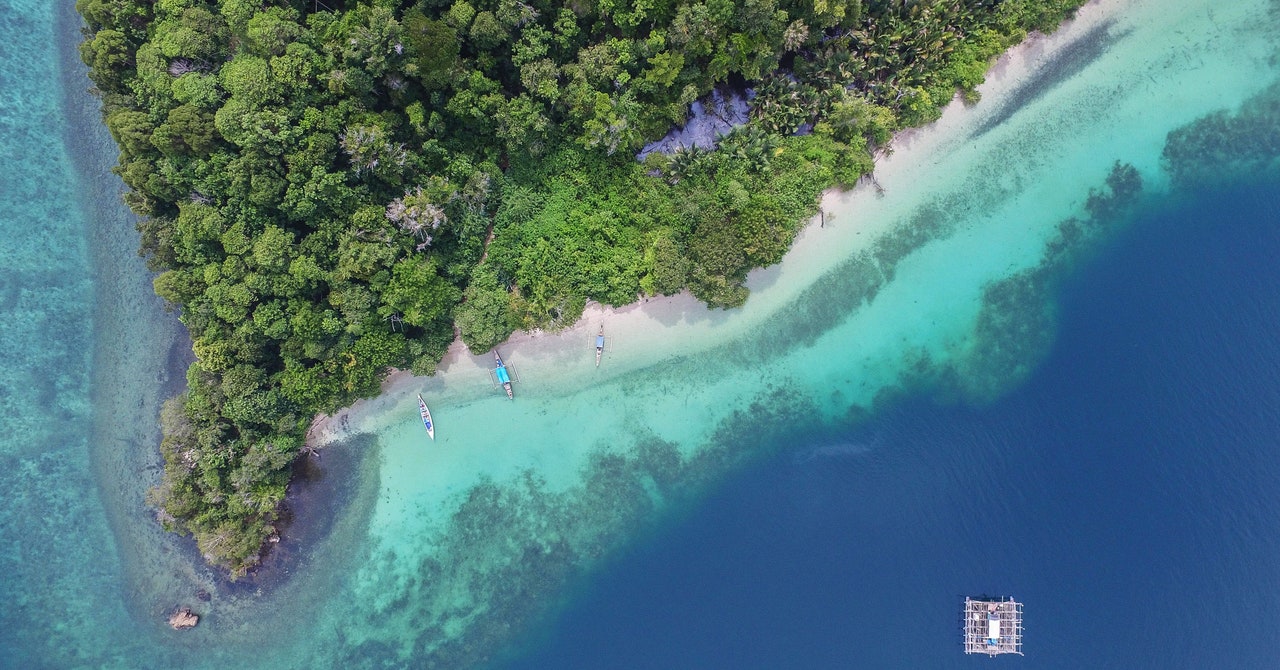
The limestone caves and rock shelters of Indonesia’s southern Sulawesi island hold the oldest traces of human art and storytelling, dating back more than 40,000 years. Paintings adorn the walls of at least 300 sites in the karst hills of Maros-Pangkep, with more almost certainly waiting to be rediscovered. But archaeologists say humanity’s oldest art is crumbling before their very eyes.
“We have recorded rapid loss of hand-sized spall flakes from these ancient art panels over a single season (less than five months),” said archaeologist Rustan Lebe of Makassar’s culture heritage department.
The culprit is salt. As water flows through a limestone cave system, it carries minerals from the local bedrock, and the minerals eventually end up in the limestone. At the limestone’s surface, those minerals oxidize into a case-hardened rocky crust. Nearly all of the oldest rock art in Maros-Pangkep—like the oldest drawing in the world that depicts an actual object—is painted in red or mulberry-purple pigment on that hard outer layer. The rock is resistant to most weathering, providing a durable canvas for humanity’s oldest artwork.
But beneath the surface, trouble is brewing. Flowing water deposits minerals in the void spaces beneath the mineralized outer crust, and some of those minerals crystallize into mineral salts. As those crystals form, grow, and shrink, they push against the outer layer of mineralized limestone. Eventually, the rocky canvas where people first drew images of their world 40,000 years ago falls apart in hand-sized flakes.
To help understand the extent of the problem and confirm that salt is to blame, Griffith University archaeologist Jillian Huntley and her colleagues collected flakes from the walls and ceilings of 11 caves in the area, including Leang Timpuseng, home of the oldest hand stencil. They found mineral salts like halite and calcium sulfate on the back sides of flakes from three of the sites. And all 11 sites showed high levels of sulfur, which is a key ingredient in many of the destructive salts that worry rock-art conservators.
Exfoliation isn’t a new process, but archaeologists and site custodians in Maros-Pangkep say they have watched the process speed up over the last few decades. Some of the local people who manage and protect the rock-art sites have done so for generations, and they report “more panel loss from exfoliation over recent decades than at any other time in living memory,” wrote Huntley and her colleagues.
That’s no coincidence, according to Huntley and her colleagues.
Here’s how the process works: heavy monsoon rains drench Indonesia and the surrounding region from November to March, leaving behind water in cave systems, flooded rice fields, and brackish aquaculture ponds along the coast. The water carries a load of dissolved salts and their mineral ingredients—things like table salt or halite, along with gypsum, sodium sulfate, magnesium sulfate, and calcium chloride.
When the water begins to evaporate, the salt it carried stays behind as crystals, which expand and contract along with changes in temperature and humidity. Some geological salts, like the ones mentioned above, can expand up to three times their original size when heated, and they can put an impressive amount of pressure on the surrounding rock. The result is similar to the freeze-thaw cycles that enable water ice to crack rocks and concrete.
The whole cycle is more active and more pronounced when temperatures rise and the local weather swings from extremely wet to extremely dry every few months. And that’s precisely the conditions Indonesia is experiencing as the climate gets warmer and extreme weather events become more frequent. More and more over the last few decades, severe monsoon flooding is followed by periods of intense drought.
People struggle, rocks crack, and a little more of humanity’s deepest connection to itself fades away.
“We are in a race against time,” said rock-art expert Adhi Agus Oktaviana of Indonesia’s National Research Center for Archaeology (ARKENAS). “Our teams continue to survey the area, finding new artworks every year. Almost without exception, the paintings are exfoliating and in advanced stages of decay.”


